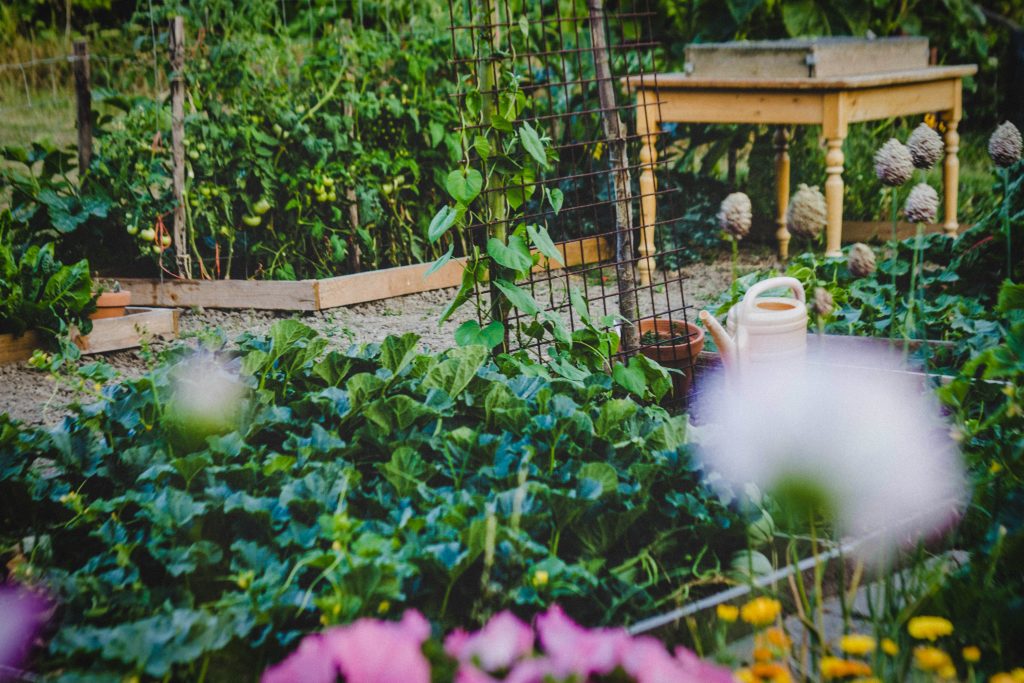How to incorporate greenery into urban spaces? Where to put green spaces in a densely populated area? Putting them on a roof is a way to go! The benefits of green roofs are being increasingly appreciated, as rising numbers of people started valuing natural habitats. Ever wondered why that is? What is the charm of green roofs? Well, you came to the right place…
What are Green Roofs?
We spoke with Jéssica Fogeiro, Landscape Architect and Executive Coordinator at ANCV Green Roofs – a non-profit organisation whose goal is to spread and provide information about green infrastructure, specifically green roofs. And first of all, let’s get familiar with the term ‘green roofs’: they are roofs with installed vegetation and designed with a system constructed in layers, which “must ensure the good development of the vegetation, respecting and promoting the physical integrity of the built structure”.
Green roofs can be either extensive or intensive. Extensive ones require lower maintenance, include sedum plants, bulbs, wildflowers and succulents, and are very easy to set up; while intensive ones typically provide a space for urban agriculture (gardening, farming), include ornamental lawn, summer flowers, demanding shrubs, bushes and trees, are more complex and require greater expertise. However, the latter contributes to urban climate, biodiversity and co-benefits much more than the first. There are pros and cons with both, but just by having a green roof, you’re gaining more benefits and contributing more to climate adaptation than you might be aware of.
Another way to combine biodiversity protection with a solar energy boost is to incorporate solar panels into your green roof, making it a ‘biosolar roof’. The combination of photovoltaic panels and vegetation has many advantages: it increases efficiency of the solar system, increases biodiversity, protects the waterproof layer, and as Jéssica notes, this combination creates clean energy. When the surface reaches the temperature of 25°C or more, biosolar roofs start to reduce the amount of energy needed, to produce more energy; or simply: with these two systems together, roofs increase energy production. For example, panels help shade vegetation in that area, making the roof cooler and consequently helping the vegetation and overall biodiversity. There are numerous ways to install solar panels:

A vertical position of the panels is best for enabling vegetation to grow freely, while panels mounted more than 2 m above the green roof create shaded spaces underneath them. It’s important, however, to enable appropriate water distribution throughout the green roof.

Benefits of Green Roofs
According to Jéssica Fogeiro (discover more findings from our interview here), green roofs offer several benefits, called “ecosystem services”. They differ according to the type of roof – gains can be considered either as public or private benefits, depending on whether they are felt on a collective (e.g. improvement of air quality) or individual (e.g. reduction of the energy consumption of a private house) scale.
Some of the main benefits are:
Air Purifying

Green roofs promote the improvement of air quality by capturing CO2, producing and releasing oxygen through the retention of dust and particles suspended in the air. Green roofs are a perfect means to naturally purifying the air.
Noise Reduction
With the help of soil, plants, and trapped layers of air within roof systems, green roofs act as a sound insulation barrier. The system used and the depth of the substrate play a huge role in the amount of sound insulation that the green roof produces; however, usually sound is reduced somewhere around 40 or 50dB, which approx. amounts to silencing a loud conversation or a passing car.
Water Management
Green roofs help absorb rainwater, reduce the flow and consequently relieve the impact on drainage systems. They can also help reduce floods from the impact of intense rainfall.
Additionally, the stored water can later be harvested from roofs. It can be used to supply the roof, or other landscape areas, with the same water in times of drought, be saved for a fire reservoir, toilet flushing or car washing.
Thermal Fluctuations
It’s no surprise roofs get hot quickly – they are constantly exposed to the sun and built with heat absorbent materials. However, as Jéssica points out, during the day, roofs on average reach about 60°C. Plants on roofs help reduce this temperature by more than half, decreasing the roof’s temperature to about 25°C – quite a difference. As it happens, green roofs maintain a more or less constant temperature throughout the year.
Because green roofs reduce heat flow across the roofing system, they are perfect for both heating interior space in winter, by cutting the heat leaving the building at night by up to 70%, and for cooling in summer by reducing the heat entering the building during the day by more than 85% – so practically no need for air conditioning.
Unfortunately, heat islands have become a growing and constant problem in larger cities. Green roofs help reduce this effect as plants absorb this heat and release condensation, essentially serving as insulation objects. Read about it in detail here.
Aiding Biodiversity
Humans are a species that wants to be in fresh air, wants to be in nature.
Green roofs create a place for animals and they enable (urban) biodiversity to evolve. They provide a safe space for species that previously inhabited this area. Usually, green roofs support bees, beetles, butterflies, moths, earthworms, snails, birds and can sometimes even support special vegetation – a green roof near Zurich provides a space for 10,000 orchids and 175 native wetland plant species. Read more about how green roofs are beneficial to biodiversity production here.
Green roofs offer a rich, diverse spectrum of ecological benefits. Just look at this simplified chart for a clear visual of the benefits of green roofs:

Fresh produce
With the installation of intensive green roofs, a whole world of gardening possibilities opens up, consequently enabling the production of fresh fruits and vegetables. And organic produce is something that is becoming more and more sought-after. With the garden being directly over your head (literally), the food is there, waiting to be picked, without adding any unnecessary food miles to get to the dinner table.

Well-Being & Happiness
Green roofs offer a nice, relaxing space for the residents of the building. They are even more cherished when said building has no green area anywhere in close proximity.
Jéssica explains:
Vegetation helps people to feel more comfortable, to feel happier.
In fact, healthcare facilities have started noticing the benefits of installing green roofs: patients can go on the roof, enjoy the vegetation, interact with other patients or staff members – all these activities provenly lower stress and encourage natural healing. As Jessica says, “in hospitals, it’s very important to feel safe, to feel happy, to feel at home (especially for patients that have to be there for a long time) – this is what green roofs do.”
Increase in Real Estate Value
Jéssica estimates that acquiring a green roof can increase the building’s value by up to 25%. Green roofs add not only aesthetic value to the building but also provide useful features (e.g. owning a garden).
According to a Forbes’ article, amenities, such as green roofs, lead to a rental increase. For example, an apartment unit in Boston banked an additional $300-500 a month in rent, simply by units overlooking the green roof.
Challenges of Green Roofs
Considering all the benefits of a green roof installation, challenges are almost non-existent. The most important thing is to plan right, with good guidelines. “It’s important that you look for a green roof specialist, who has the knowledge to follow the guidelines existing in your country, to adjust the project to your climate,” explains Jéssica. The two things you should watch out for, though, are consulting an expert and militance – read more about it here.
Quick Recap
There are numerous advantages to procuring your very own green roof: noise reduction, air purification, water management, natural heat insulation, gardening, helping out our small neighbours the city (butterflies, bugs, etc.), and so many more. Whether it’s a biosolar, intensive or simply an extensive green roof, there is no questioning why their popularity is on the rise.
To find out how you can green (and maintain) your roof, read here.



[…] application of the green roof technology, both intensive and extensive, is a much-established and recognized worldwide practice,” says Elizaveta. Learn how to do it on […]